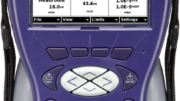A lot of people think of me as “the blog guy” at Solid Signal. The truth is that I also help a lot of customers directly, and I work with our tech team to make sure everyone’s getting the right answers. One thing I hear over and over again is the confusion about amplifying cable, satellite, and over-the-air signals. A lot of folks don’t understand the way digital signals work, and just figure that “more power” is better no matter what. The truth is a little different. Believe me, I’d love to sell everyone out there a distribution amplifier, but most folks don’t need one. I hope that this article will help you figure out if you need an amplifier in your home.
What’s the difference between a preamplifier (preamp) and a distribution amplifier?
Well, to some degree there isn’t one. An amplifier is an amplifier. It does one thing: it amplifies. But there are some things that make one amplifier a better choice for “preamplification” and one a better choice for “distribution amplification.”
Preamps work near the antenna to overcome long line loss
If you are using a smaller antenna or you’re very far from the broadcast towers, you’re going to receive very weak signals. These signals are so weak that by the time they travel down a long line to your house, they’re weaker than the noise that’s on every line by default.
So, what we do in a case like that is take that weak signal and amplify it. We take care to add as little noise as possible because the goal is to make sure that the signal isn’t overcome by the noise that’s already there.
The amount of amplification you need really isn’t much. 10dB is a good starting number, then add about 6dB for every 100 feet of cable you use. This should be enough to make sure that the signal that gets into the house is nice and strong.
Distribution amps overcome losses that are mostly due to splitting
A distribution amplifier’s goal is to erase the signal loss that comes from splitting the signal. If you are running to 8 TVs in your home, you’ll use an 8-way splitter. This will decrease the signal level by 14-18dB. Using a distribution amplifier will restore that signal strength.
Distribution amplifiers can also help with long runs inside the house. You’ll need about 6dB of extra amplification for every 100 feet of cable.
In general, you’ll find that distribution amplifiers can have more noise in them than preamps. This is normal because generally speaking, distribution amplifiers work through shorter lines.
Who should use a distribution amplifier?
It’s easier to start with “who shouldn’t use a distribution amplifier? Depending on how video comes into your home, it may be that a distribution amplifier can hurt you more than help. Let’s go into detail.
People with typical home satellite TV systems should never use amplifiers. Period.
If you have DIRECTV or DISH and you’re using a more or less standard install, you should never ever use a distribution amplifier. These systems are designed to work without the need for extra amplification. Using a distribution amp will block critical signals from getting back and forth from your satellite box to the dish. If you are using a Genie or Hopper system, the signals should be plenty strong. If you’re having signal issues at the TV with a Genie or Hopper system, the signal power probably isn’t the culprit.
People with cable TV shouldn’t use distribution amplifiers unless they know what they’re doing.
There are a lot of different cable TV systems out there. If you use the wrong distribution amplifier, you’re just going to make things worse. In general, cable TV signals come into your house so strong that there’s no need to amplify them in the home. If amplification is needed, it should be done by the cable company outside your home.
If you’re distributing signals using some sort of a headend system, or have a simple cable TV system, there are distribution amplifiers that can work in that situation. However, they are generally way too expensive for home use. Using the wrong distribution amp in this case might not hurt you, but chances are it won’t help you either.
Using a distribution amplifier with over-the-air antenna signals
Consumer-grade distribution amplifiers like these can help with problems inside your home. Here’s how you can decide if you need one.
Are the TVs further away from the antenna getting fewer channels or worse reception?
Make sure you’ve done an up-to-date channel scan and that you’re talking about televisions of similar quality. If your LG TV in the living room, where the antenna comes in, gets 50 channels but your similar LG TV in the master bedroom gets 25 and the ones that do come in freeze, a distribution amplifier can help.
Are you using a lot of TVs or other over-the-air devices?
If you’re running the antenna signal to more than two TVs, a distribution amp might help you in a case like that. Definitely, if you’re using 8 TVs or more, a distribution amp is a great idea.
Are you trying to amplify the signal because you bought inexpensive cable or because the cable is old or worn?
A distribution amp generally won’t work in this case. Old or broken cables are still going to be old and broken even if you amplify the signal they carry. In a case like that you’re better off running high-quality dual-shielded RG6 cables.
Is the problem static when you’re using fluorescent lights or using the microwave?
A distribution amp won’t help there either. The issue is the shielding of the cable you’re using. Choose good quality quad-shielded cable rather than a distribution amp.
Want to know more?
If you need help choosing a distribution amplifier, picking out the right cable, or with anything else in your home’s entertainment system, call the experts! Solid Signal reps are here for you during East Coast business hours. Call 888-233-7563 or fill out the form below and we’ll get right back to you.





